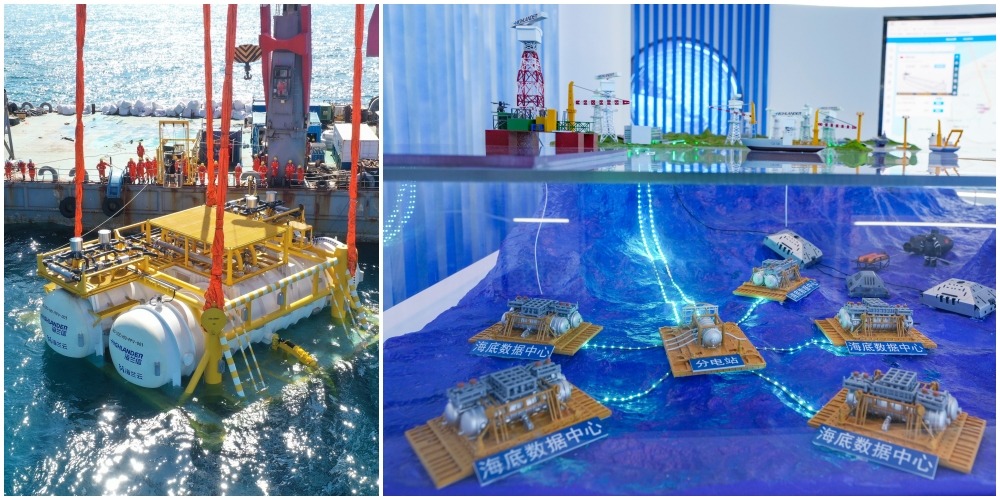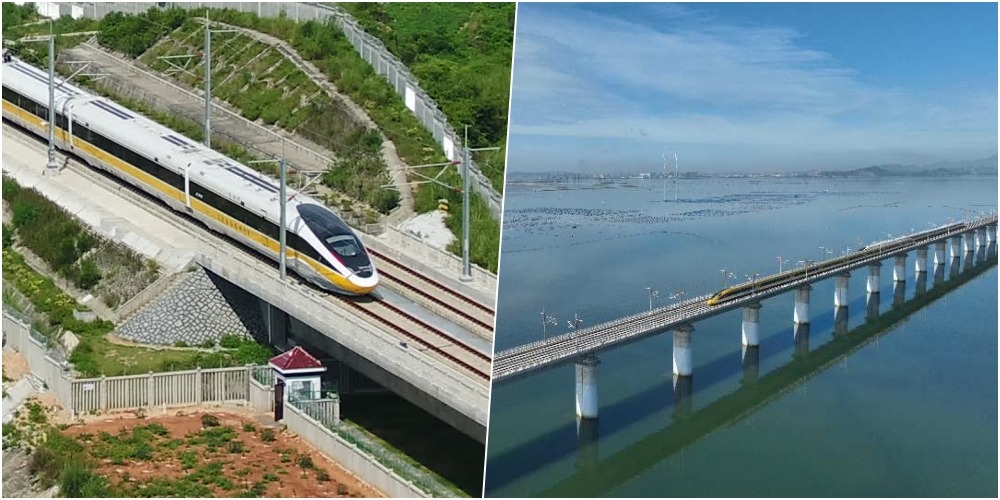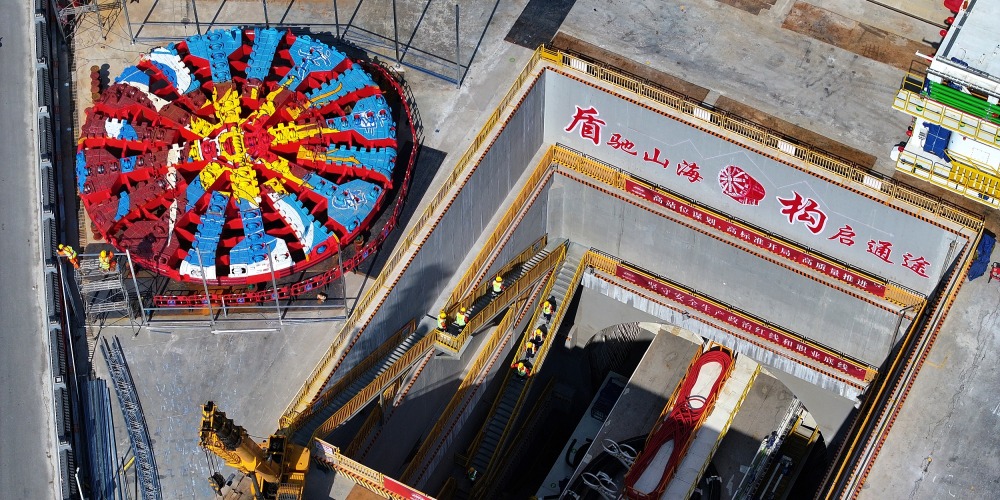Published : 2024-01-14
China has regarded data centres as one of the six major focuses of "new infrastructure". However, data centres consume a lot of energy, and in order to achieve a green and low-carbon transition, some people suggest placing data centres on the seabed.
Putting data centre underwater not only reduces the failure rate but also saves electricity, water resources, and land resources. Near the waters of Lingshui, Hainan, China, the world's first commercial underwater data centre has been placed. How was this data centre built? Is the underwater data centre really safe and reliable?
Hainan builds the world's first commercial underwater data centre
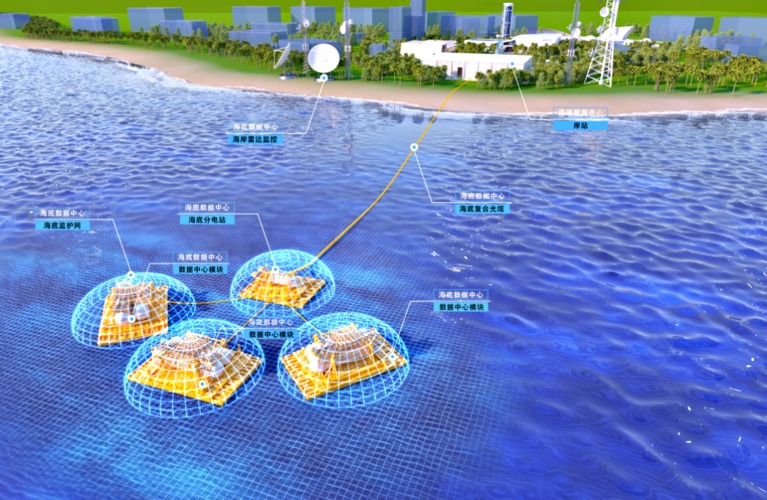
The underwater data centre system is based on the coast and seabed, consisting of a shore station, an underwater high voltage compound cable, an underwater substation, and a data capsule.
In March 2023, the first underwater ceremony of the Hainan underwater Data Centre project was held in Lingshui, Hainan. This is the world's first commercial underwater data centre.
Subsequently, between late November and December of the same year, the core equipment of this underwater data centre - a 1,300 tonne underwater data capsule was successfully installed, marking the official completion of the underwater data centre.
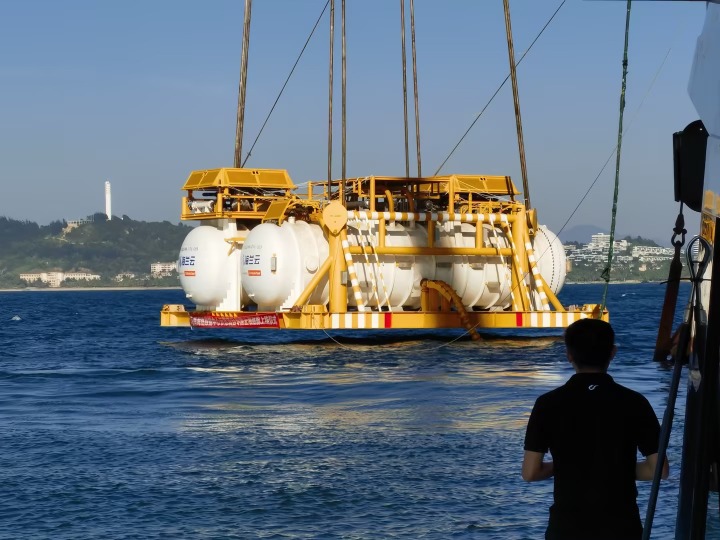
Data centres are used for storing, calculating, and processing information. The Hainan underwater data centre can store data and is also known as the "supercomputer" of the seabed. It is equivalent to 60,000 traditional computers working online at the same time, capable of processing more than 4 million high-definition photos within 30 seconds.
The centre is more than 3 kilometres away from the coast and over 40 metres deep. It is designed for long-term operation without maintenance, with a design life of 25 years.
Advantages of underwater data centres
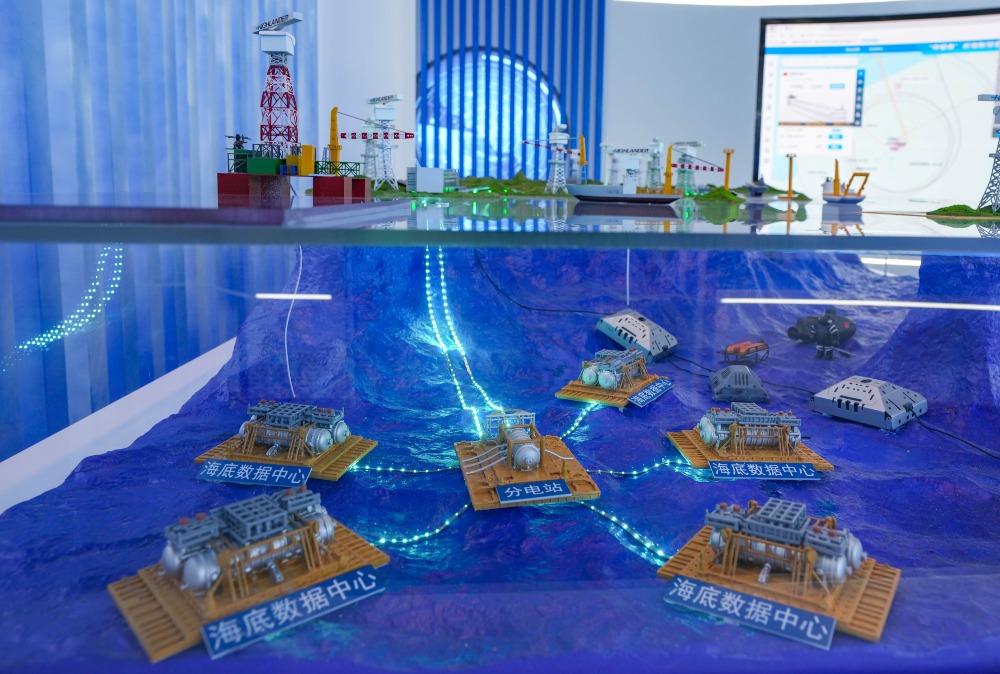
Why move data centres from land to underwater? The first reason is to save electricity and water. A data centre often contains thousands of servers, which emit a lot of heat during the calculation and storage process.
To maintain efficient operation, data centres need continuous heat dissipation, but cooling servers consume a lot of electricity and the cost of electricity is astonishing. By placing servers in an underwater data capsule, the flow of seawater can be exploited for cooling. There is no need for refrigerating machines and cooling towers, saving a large amount of electricity and freshwater.
At the same time, underwater data centres are more easily integrated with clean energy sources such as offshore wind power. They convert ocean electricity into computing power and, by using undersea space, the construction of underwater data centres can save land resources.
Moreover, inside the data capsule of the submarine data center, there is a constant pressure and humidity, oxygen-free and dust-free environment to further protect the electronic components of the server and reduce the occurrence of failures.

According to introduction, the Hainan Underwater Data Centre project plans to deploy 100 capsules. After completion, compared with the same scale of traditional land data centres, it can save a total electricity consumption of 122 million kWh per year, save 68,000 square meters of land area, and save 105,000 tonnes of freshwater.
It is worth mentioning that placing data centres underwater near coastal cities can reduce the latency of data transmission, thereby achieving fast and smooth network services, which is suitable for industries that require precise data synchronization, such as autonomous cars.
Are underwater data centres safe and reliable?
Servers and other equipment are extremely vulnerable to water damage, so how is it ensured that underwater data centres can be safely used?
In reality, the design of underwater data centres needs to overcome three major challenges. First is ensuring waterproof sealing, second is resisting damage from seawater corrosion and settlement of shallow sea creatures, and third is achieving long-term maintenance-free operation.
During the research and development phase, the engineering team of the Hainan underwater data centre successively conquered the technical difficulties such as recoverable underwater pump module design and ultra-large diameter head flange underwater sealing safety. When the underwater data capsule is sealed, the order and direction of each bolt must be precise to the millimeter.
The engineering team then developed a technique to prevent biological adhesion in shallow sea areas, solving the problem of sedimentation and even corrosion by seabed creatures in tropical waters.
The underwater data centre has used several tens of meters of deep seawater as a natural barrier, reducing the risk of natural disasters in a relatively safe and stable environment.

In July 2023, when Typhoon "Terry" wreaked havoc, the underwater data capsule of the data centre was not affected by the typhoon, and all underwater facilities and the businesses they carry were able to operate stably.
The exploration of underwater data centres began with Microsoft's launch of the 'Natick' project in 2015. In 2020, Microsoft announced the successful verification of the project.
In practice, by relying on seawater as the natural source of cooling, server consumption was significantly reduced, with a failure rate only an eighth of that on land.
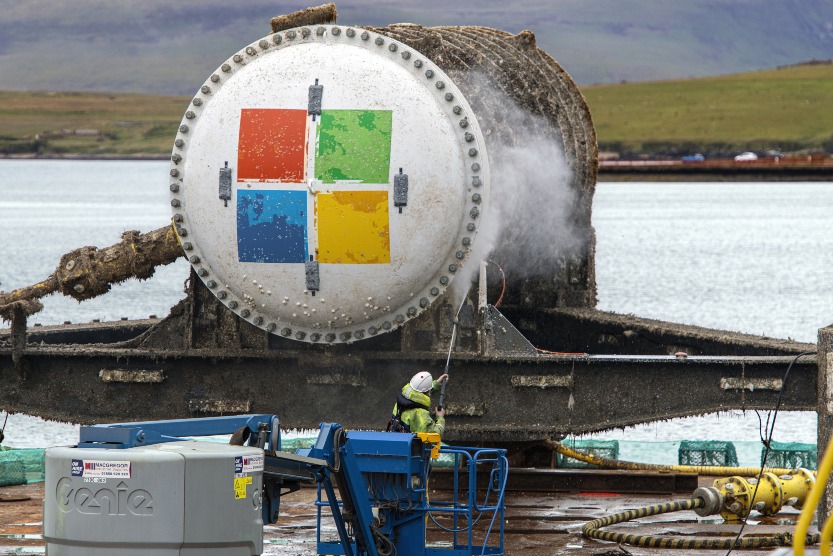
Read more: Why is Shaoguan selected for the data centre cluster in the Greater Bay Area?
